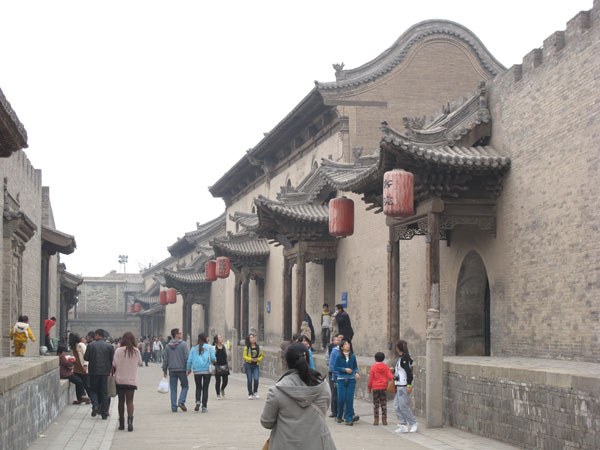Manor a witness to the family's past glory
All wooden eaves and pillars are decorated with delicate sculptures and most rafters are painted with lively patterns. Even the bricks under the roof are decorated with sculptures.
The sculptures and patterns, telling fairy tales by depicting vivid legendary images or conveying good luck by portraying flowers and fruits, are masterpieces of craftsmen during those days.
The decorative details enrich my visit and give life to the buildings. Observing the beautiful art makes me feel a certain connection with the then craftsmen and house owners.
The Chang family was famous for its education and studies of Confucian thoughts. The family applied Confucian thoughts in business and successfully passed its business and wealth down for nine generations.
The graduates from the family academy were sent to its business branches nationwide as interns and the best ones were assigned important posts. The family attached great importance to credit, morality, prudence and flexibility.
The Chang family maintained good rapport with the locals by offering jobs and education. The family also helped the Qing imperial court with disaster relief and contributed money to pay the nation's debt.
It is also a known fact that the family implemented strict family rules and hierarchical orders, which can be seen in the similar formats of the three big yards juxtaposed down the road next to the school, for three of the Chang brothers.
Each big yard is made of three smaller patios. The outer one is to isolate the middle and inner yards from the road. A huge screen wall stands in between the middle and inner patios, decorated with brick sculptures, which are used to fend off evil according to local traditions.

Behind the screen wall is the middle yard entrance, in which two rows of rooms face each other, with flowers and trees planted in between. These were rooms for guests, dining and studies. The bedrooms were in the inner yard, with the house owners residing in the middle main room, while the other family members lived in the other rooms based on their status.
It is noteworthy that all roofs are one-sided and steeply tilted to the yard. This is to collect rainwater, a symbol of wealth in local culture, and protect against thieves, because the outer wall of the house is built very high.
To the north of the yards is a huge garden with an artificial lake, covering 7 hectares. The whole manor was built with drainage systems to collect rainwater for the lake, which still functions well today.
According to a 200-year-old record, Chang Wanda, the manor's main designer, said he hoped people coming to the mansion could not only live here, but also work, read, study, meditate, recite poetry and see beautiful sights.
Although the Chang family's business was bankrupted as Qing rulers were forced to trade with foreign powers on the sea after mid-1800s, my visit got me meditating on ideas related to business, education and society.
Chang Wanda would have been pleased.
Sun Ruisheng contributed to the story.



















